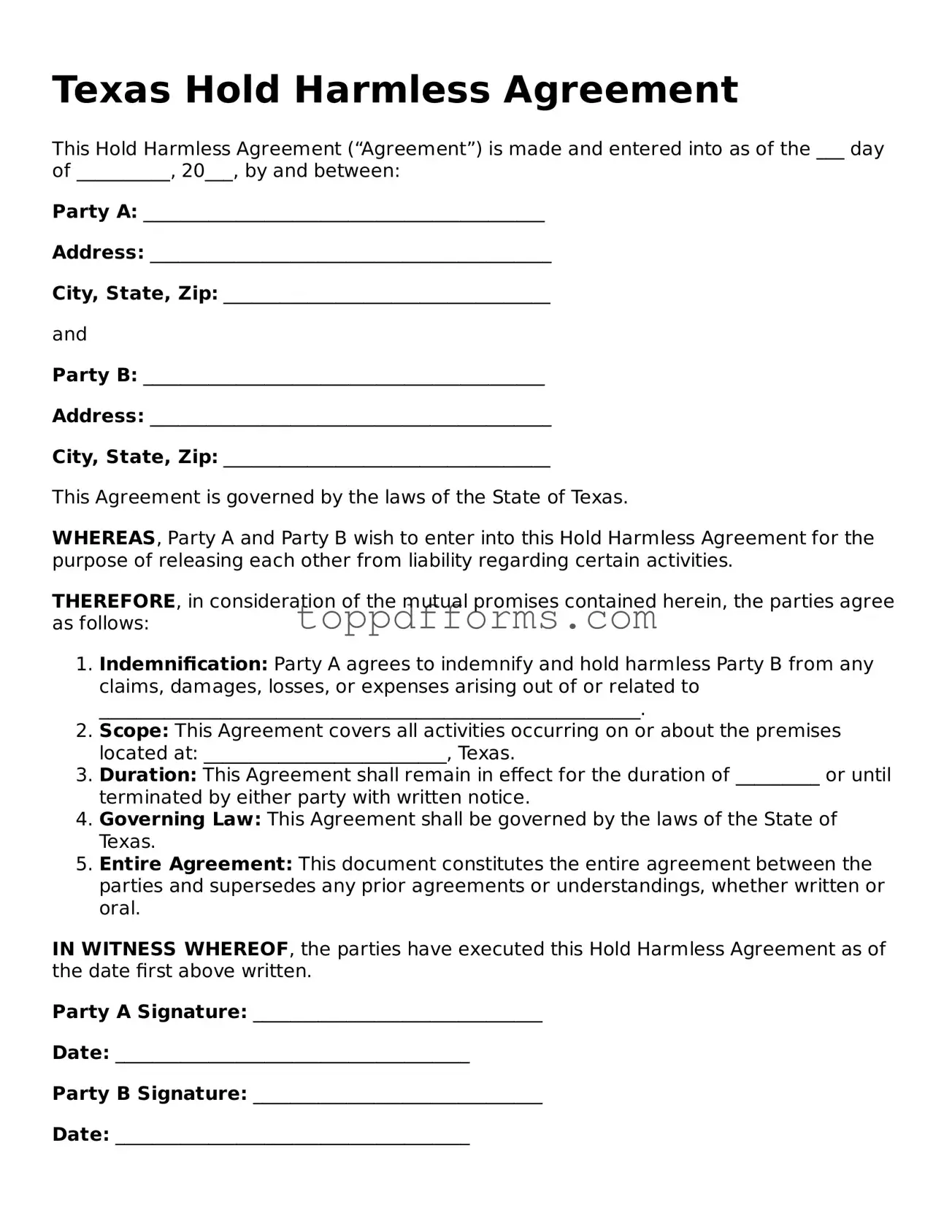When filling out a Texas Hold Harmless Agreement, it’s essential to be thorough and accurate. Many people make common mistakes that can lead to confusion or even legal issues later on. Understanding these pitfalls can help ensure that your agreement is valid and enforceable.
One frequent mistake is not including all necessary parties. It’s crucial to identify everyone involved in the agreement clearly. If you leave out a party, it could lead to disputes or claims that are not covered by the agreement. Always double-check that all relevant individuals or entities are listed.
Another common error is failing to specify the scope of the agreement. The agreement should clearly outline what activities or events are covered. Without this clarity, the agreement may be interpreted in ways you did not intend, potentially leaving you exposed to liability.
Many individuals also overlook the importance of using precise language. Ambiguities in wording can lead to misunderstandings. For instance, terms like “negligence” or “damages” should be clearly defined to avoid confusion. The more specific you are, the better your agreement will serve its purpose.
Additionally, not including a date is a common oversight. A date establishes when the agreement takes effect, which is vital for clarity. Without a date, it may be difficult to determine the timeline of liability, especially if the agreement is referenced in the future.
Some people forget to have the agreement signed by all parties. A Hold Harmless Agreement is only effective if all involved parties acknowledge and agree to its terms. Ensure that everyone signs and dates the document to validate it.
Another mistake is neglecting to consult legal advice. While it might seem straightforward, legal documents can have significant implications. Seeking advice from a qualified professional can help you understand the nuances and ensure your agreement is comprehensive and enforceable.
People also often assume that a verbal agreement suffices. In legal matters, written agreements are typically more reliable than verbal ones. A Hold Harmless Agreement should always be documented to provide clear evidence of the terms agreed upon.
Lastly, failing to keep copies of the signed agreement is a mistake that can lead to complications later. Always retain a copy for your records, and consider providing copies to all parties involved. This ensures that everyone has access to the terms and can refer back to them if necessary.
Avoiding these common mistakes can significantly enhance the effectiveness of your Texas Hold Harmless Agreement. By paying attention to detail and ensuring clarity, you can protect yourself and others involved in the agreement.
